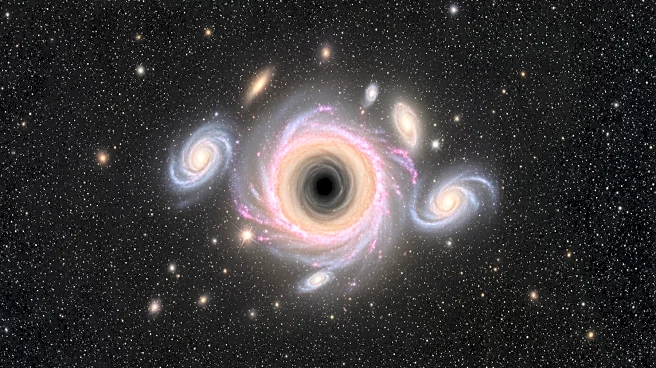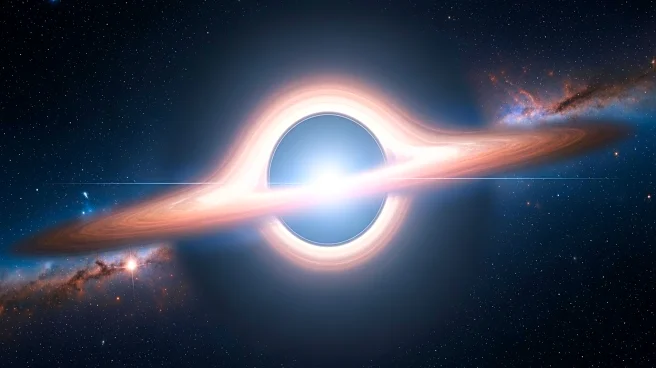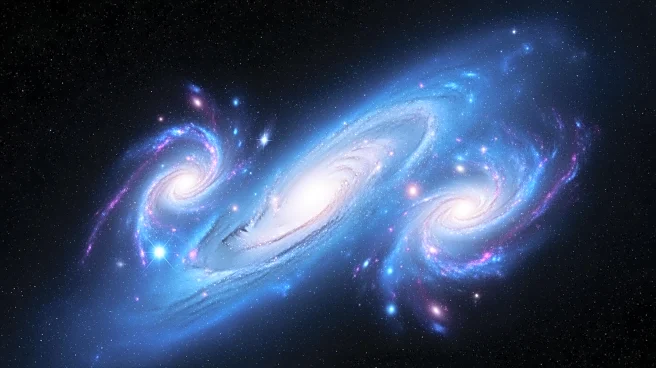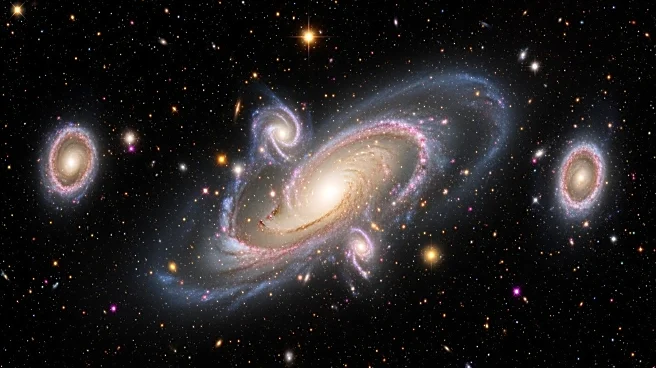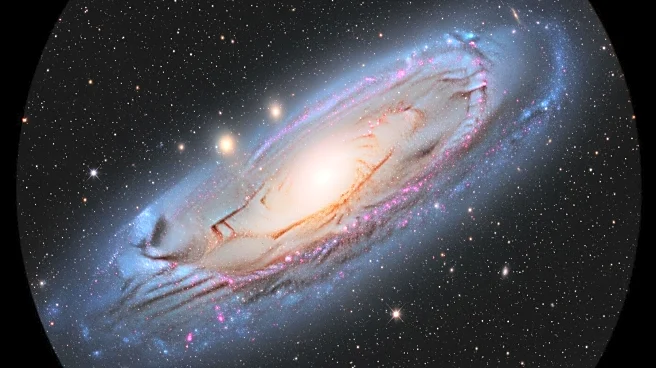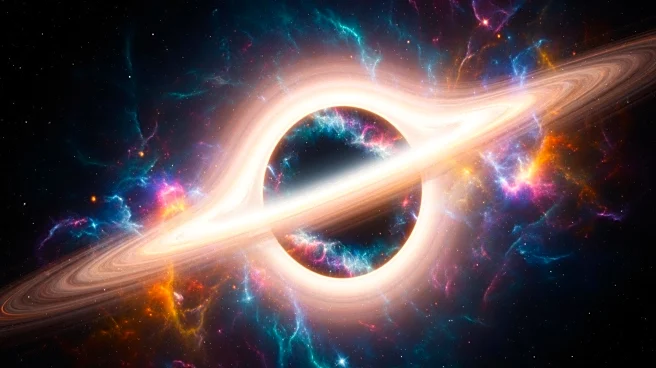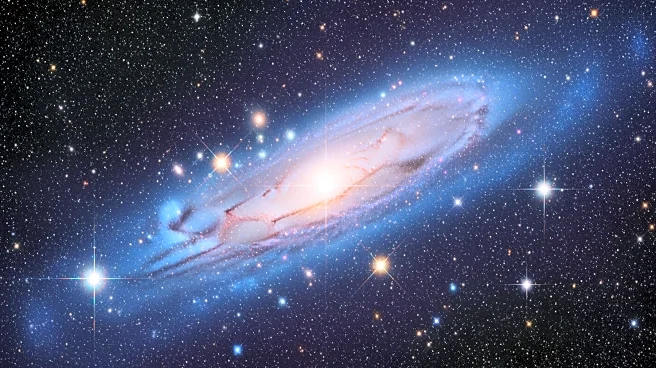What's Happening?
The James Webb Space Telescope (JWST) has made a significant discovery regarding the origins of supermassive black holes. Observations of the object QSO1, located in the galaxy cluster Abell 2744, reveal
a black hole with a mass equivalent to 50 million suns. This black hole appears to dominate its system, lacking a significant component of gas and stars. The findings suggest that some early-universe black holes may have formed from the direct collapse of massive gas clouds, rather than from stars.
Why It's Important?
This discovery challenges existing theories about the formation of supermassive black holes and suggests that they may have evolved earlier and more rapidly than previously believed. Understanding the origins of these black holes is crucial for comprehending the evolution of galaxies and the universe. The findings also support the idea of primordial black holes, which could have formed shortly after the Big Bang, providing new insights into the early universe.
Beyond the Headlines
The study of QSO1 and similar objects could help resolve the 'chicken-or-egg' problem of whether galaxies or black holes formed first. The potential existence of primordial black holes raises questions about the nature of dark matter and the early universe's conditions.


